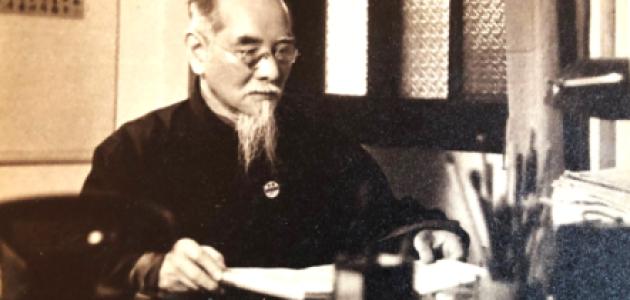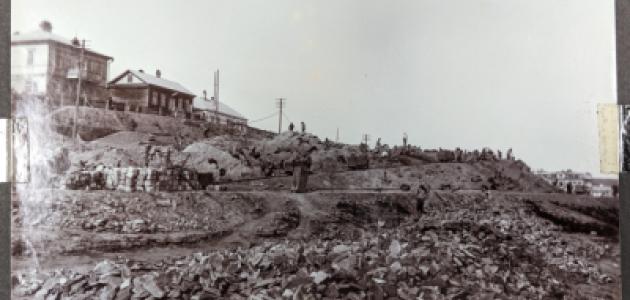Above: Representatives of Poland's Ministry of Culture and National Heritage join Robert H. Malott Director of Hoover Library & Archives, Eric Wakin (far right), at the signing ceremony in the historic Royal Castle in Warsaw.

On January 25th, representatives of Hoover Institution Library & Archives and three units of the Polish Ministry of Culture and National Heritage met in a ceremony celebrating an agreement to provide free digital access to some of Hoover’s most important materials about Soviet totalitarianism and its legacy. With the support of Poland’s Central Archives of Modern Records, National Digital Archives, and Witold Pilecki Center for Totalitarian Studies, thousands of testimonies of Polish survivors of the Soviet Gulag preserved in Hoover’s Władysław Anders collection will be given full digital access in both the original Polish and English translation. The work of providing easily readable and fully searchable copies in both Polish and English, as well as developing and maintaining the website www.ChroniclesofTerror.pl (linked to Hoover’s) will be done by the Pilecki Center. By making unique testimonies of the Gulag experience readily available to academics, students, and policy-makers, this landmark digital hub will be a premier online resource for the study of authoritarianism. The Ministry of Culture and National Heritage will provide the funding for the program. The signing ceremony took place in the historic Royal Castle in Warsaw in the presence of government officials, journalists, representatives of historical and cultural institutions, diplomats, and historians. The ceremony was followed by a reception and a press conference, with comments by Hoover Institution Deputy Director and Library & Archives Robert H. Malott Director, Eric Wakin.
World War II began in September 1939 with a coordinated attack on Poland by Hitler’s Germany and Stalin’s Russia. Nearly six million Polish citizens, Jews and Christians, perished during the six years that followed. A million civilians and military prisoners were deported from Eastern Poland to camps and remote settlements of Soviet Asia. A large number of these prisoners and deportees died of hunger, cold, and disease, or were shot in mass executions; the rest lived to see an “amnesty” declared by Stalin for his Polish prisoners after the Germans attacked their erstwhile ally and the Soviets switched sides in the war. A Polish army made up of some of these survivors was formed in Central Asia under the command of General Władyslaw Anders, one of the few Polish officers to survive the Katyn Forest Massacre, a mass shooting ordered by Stalin and carried out by the NKVD. In 1942, Anders’ soldiers and some members of their families, 115,000 in all, were allowed to enter Iran via the Caspian Sea and join the British forces in the Middle East and later Italy.
While still in the USSR, General Anders ordered the formation of a special unit, eventually named the “Documents Bureau,” to collect statements and reports from former Gulag prisoners and civilian deportees regarding their experiences while in Soviet Russia. The project was greatly expanded after the Anders Army left the Soviet Union. The collected documents exist in a variety of formats: from one-page questionnaires to book-length reports and memoirs. There were also specialized questionnaires: for the clergy, for Jews, for laborers, etc. All in all, there are 18,304 such documents in the Anders Collection. The body of materials collected by the Anders Army represents the only large collection of original testimonies of survivors written shortly after release from the Gulag, while the collections now in existence in Poland (Karta), Russia (Memorial) and the former Soviet republics consist mostly of testimonies written fifty years or more after the events.
The Władysław Anders/Documents Bureau materials came to the Hoover Institution in 1946, shortly after General Anders was contacted in Rome by Hoover’s newly hired special acquisition agent, Jan Karski, the hero of the Polish underground who brought the news of the Holocaust to the West. Anders knew Karski and was an admirer of Herbert Hoover, not only for his humanitarian work in Poland, but also for his strong criticism of the Yalta agreement, which Anders felt was disastrous to the cause of Polish independence. Anders knew that the materials gathered and generated by his Documents Bureau would be safe in the Hoover Library & Archives. In 1951-52, General Anders allowed the Library of Congress and the CIA to use his collection for a landmark study of Soviet labor camps. The entire collection was opened for general research in 1998, after the Hoover Institution received full legal ownership of the Anders deposit. A microfilm copy of the Anders Collection, along with microfilms of seventeen other collections on Poland during World War II, altogether one-and-a-half-million pages of documents, was given to Poland during 1999-2001. A few years later the Polish State Archives digitized the documents and made them publically accessible via one of its websites, www.szukajwarchiwach.pl. The agreement just signed represents the final step in publicizing the existence of these uniquely valuable Hoover research holdings and making them easily accessible to a broad international community. The Pilecki center has undertaken to share the first iteration of the Anders project on its website as early as April 1, 2017.


















